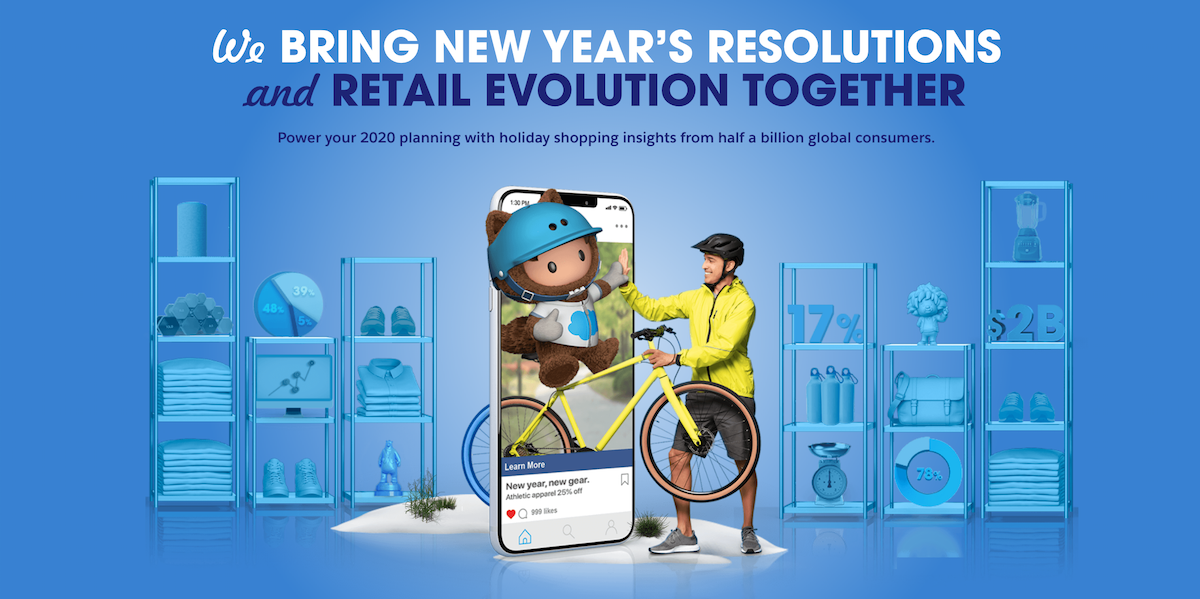As the dust settles on the 2019 holiday season, many retailers will be reviewing what worked well, and what they could do better this year.
If that’s the case for your retail business, our Holiday Insights 2019 Report could help. Packed with data gleaned from half a billion global consumers, it sheds light on shopper behaviour throughout the season – from Cyber Week to Boxing Week.
Interactive elements let you select the data you’re most interested in, including exclusive findings from the UK. To give you a flavour of what’s in store, we’ve pulled out four key lessons for UK retailers below – and there’s a link to further tips and how-tos at the end.
Lesson 1: Cyber Week is the new Boxing Day
Until recently, Boxing Day was the big shopping day of the UK holiday season. But the US tradition of Cyber Week (comprising Black Friday, Cyber Monday, and the days either side) is becoming more popular with Brits by the year.
In 2019, the appeal of Cyber Week was further enhanced by the fact that Black Friday fell unusually late, on November 29th – aka payday for many salaried UK workers. Over one-third (35%) of all UK digital holiday season sales were made during Cyber Week, dwarfing the 5.85% made during Christmas and Boxing Week.
And the gains weren’t limited to Cyber Week itself. Canny price discounting and digital marketing campaigns resulted in bumper weeks either side, too – racking up 14.2% and 15% of all digital holiday season sales respectively.
Our findings are borne out elsewhere – Barclaycard described Black Friday 2019 as ‘outstanding’ compared to 2018, recording a 16.5% increase in transaction value over the previous year.
With 68% of respondents to our 2019 Connected Shoppers report saying they pay more attention to marketing emails during the holiday season, there’s a captive audience awaiting retailers with a solid Cyber Week strategy.
Top takeaway: Brits are warming to November shopping, so if you’re not already on the Cyber Week bandwagon, consider making it a focus for 2020.
Lesson #2: Personalisation pays off
There’s no doubt about it: shoppers value retailers that understand their needs.
It was clear in our 2019 Connected Shoppers Report, in which shoppers said the #1 trait of their most-loved brands is ‘catering to their unique needs’. And in our 2019 State of the Connected Customer survey, 69% of respondents said they expect companies to ‘understand their needs and expectations’.
Brands that take the time to get personal are rewarded not just with loyalty, but with additional revenue. Our holiday report shows that on peak shopping days, 10% of orders and 5% of revenue consisted of items that had been recommended by AI.
Without personalised recommendations, those items might never have been ordered. And with more people now shopping on mobile devices, making recommended items prominent on the small screen has never been more important.
The takeaway: If you’re not using AI today to make personalised offers and recommendations, resolve to check it out ahead of the 2020 holiday season.
Lesson #3: Bricks and mortar are still relevant – but their role is changing
Despite the rise of digital, physical outlets still have a vital role to play in fulfilling shoppers’ needs.
One increasingly valuable aspect of physical stores is the ability for shoppers to collect items they’ve bought online. The 2019 holiday season report reveals growing demand for click and collect – especially after shipping cut-off for Christmas gifts.
Retailers offering click-and-collect saw 56% more active shoppers in the five days leading up to Christmas, and captured 18% more revenue than stores with no click-and-collect offering.
And that’s just one way bricks and mortar can continue to meet shoppers’ needs. Our 2019 Connected Shoppers Report showed that consumers also value stores that provide unique experiences and help them to make buying decisions.
While retailers have been sceptical of ‘showrooming’, the data suggests it also drives in-store sales. Eighty-one percent of shoppers said they like to go into physical stores to touch, feel and evaluate products – but 62% also said they tend to buy more than they planned to when shopping in-store.
The takeaway: Bricks and mortar stores are still relevant, but their role in the shopper journey is changing. Resolve to find ways to maximise the value of physical outlets in 2020.
Lesson #4: Shopping is moving to the edge
The way we shop in the UK is changing fast – and social platforms and mobile devices are behind some of the biggest shifts.
It’s part of a trend we’ve called ‘shopping at the edge’, in which consumers are engaging with brands and purchasing products through fringe touchpoints like social platforms and voice assistants – sometimes without even visiting a retailer’s site.
Our survey found that orders coming from social platforms increased significantly in the 2019 holiday season, with Facebook the biggest driver. It also revealed a strong correlation between orders coming through social platforms and the use of mobile devices to make those orders.
During the holiday season, far more social orders were made through mobile devices than desktops and tablets – with peaks occurring in Cyber Week, the week prior to Cyber Week, and Christmas and Boxing Week.
That suggests shoppers are seeing promoted items while scrolling social sites on their phone – and then tapping through to make the order. Christmas Day emerged as a peak day for mobile shopping, with 65% of all digital orders coming from a mobile device. Something to do post-dinner while visiting relatives, perhaps!
Top takeaway: Brits are increasingly happy to shop from their phones – so make sure your channels are optimised for mobile browsing and buying. And with a boom in social orders, make sure your social campaigns include clear options to buy.
The bottom line: shopping is changing – but it’s as popular as ever
UK retailers have been enduring some tough times – but the good news from our holiday season survey and Holiday Insight Report is that Brits are just as keen on shopping as they ever were.
What’s changing is the way people shop, and their expectations of the retailers and brands they buy from. Retailers that engage with shoppers on their own terms will increasingly win business, loyalty and market share.
Find more tips and how-tos on our Holiday Insights Report
In this blog we’ve given just a flavour of some of the lessons retailers can take away from this year’s survey, but we’ve also compiled plenty more tips to help you succeed across all of your customer-facing operations: from marketing and commerce to service and IT. Find all this, and more on how to power your 2020 planning in our Holiday Insights report.








